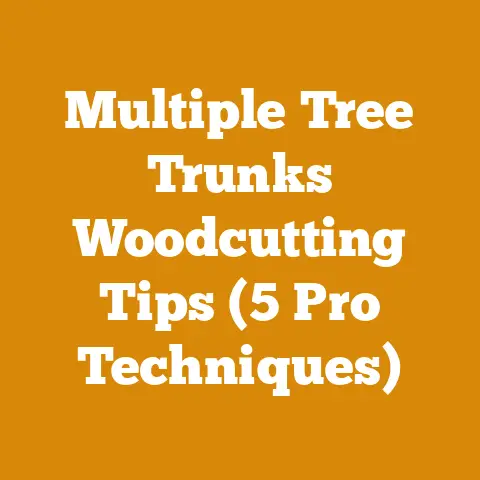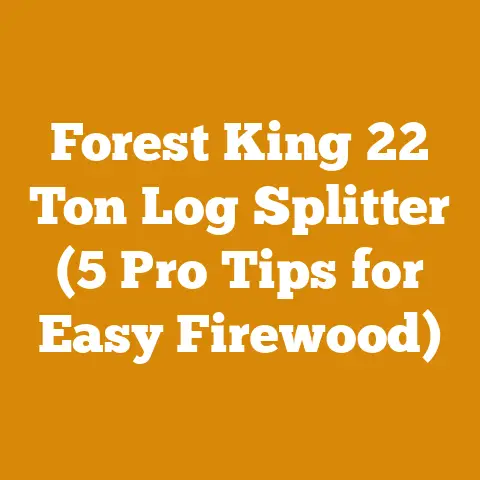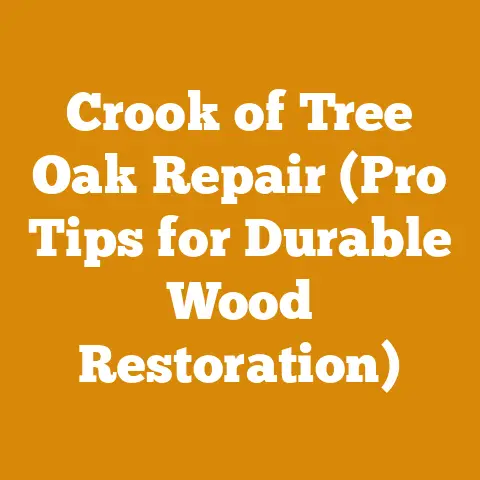How Do I Kill a Hornet Nest? (Safe Woodsite Control Tips)
Understanding the Threat: Hornet Biology and Behavior
Before we even think about attacking a hornet nest, it’s crucial to understand what we’re dealing with. Hornets are social wasps, and their nests can house hundreds, even thousands, of individuals. They are most aggressive when defending their nest, so any attempt to remove or destroy it must be approached with extreme caution.
- Identification: Hornets are typically larger than wasps and bees, with distinctive coloration depending on the species. Bald-faced hornets, for example, are black and white, while European hornets are brown and yellow.
- Nesting Habits: Hornets often build their nests in sheltered locations, such as tree cavities, under eaves, or within walls. The nests are made of a paper-like material that the hornets create by chewing wood.
- Seasonal Activity: Hornet activity peaks in late summer and early fall, as the colony reaches its maximum size. This is also when they are most aggressive.
The Sting:
Hornet stings are painful, and they inject venom that can cause a range of reactions, from localized swelling and itching to severe allergic reactions (anaphylaxis). If you are stung by a hornet and experience difficulty breathing, dizziness, or other signs of anaphylaxis, seek immediate medical attention.
Assessing the Situation: Is Removal Necessary?
Not every hornet nest needs to be eliminated. If the nest is located far from human activity and poses no threat, it may be best to leave it alone. Hornets are beneficial insects that prey on other pests, and their presence can contribute to the overall health of the ecosystem. However, if the nest is near your home, workshop, or any area where people are likely to be, removal is usually the safest option.
- Location: Is the nest near a doorway, pathway, or other high-traffic area?
- Activity: How much hornet activity is there around the nest? Are they aggressive?
- Risk: Are there individuals with known allergies to insect stings who may be at risk?
Safety First: Protective Gear and Precautions
Before attempting to remove a hornet nest, it’s essential to equip yourself with the proper protective gear. This is not an area to skimp on. A full bee suit is ideal, but at a minimum, you’ll need:
- Protective Suit: A bee suit or other protective clothing that covers your entire body.
- Gloves: Heavy-duty gloves that extend past your wrists.
- Eye Protection: Goggles or a face shield to protect your eyes.
- Respirator: A respirator to avoid inhaling pesticides or other harmful substances.
Additional Precautions:
- Work at Night: Hornets are less active at night, making it the safest time to approach the nest.
- Use a Red Light: Hornets can’t see red light, so it won’t attract them.
- Have an Escape Route: Make sure you have a clear path to retreat if necessary.
- Inform Others: Let someone know what you’re doing and when you expect to be finished.
Methods for Eliminating Hornet Nests
There are several methods for eliminating hornet nests, each with its own advantages and disadvantages. I will be covering the most common and effective approaches.
1. Insecticide Sprays:
Insecticide sprays are the most common method for eliminating hornet nests. These sprays are designed to kill hornets on contact and can be purchased at most hardware stores.
- Types of Sprays: There are two main types of insecticide sprays: aerosol sprays and liquid concentrates. Aerosol sprays are convenient and easy to use, while liquid concentrates are more economical for treating larger nests.
- Application: To apply the spray, stand a safe distance from the nest and aim the nozzle directly at the entrance. Spray until the nest is thoroughly soaked. It’s best to do this at night when the hornets are less active.
- Follow-Up: After spraying the nest, wait at least 24 hours before approaching it again. If there is still hornet activity, repeat the treatment.
Important Considerations:
- Read the Label: Always read and follow the instructions on the insecticide label.
- Environmental Impact: Be mindful of the environmental impact of insecticides. Choose products that are specifically designed for wasp and hornet control and that have minimal impact on beneficial insects.
- Safety: Wear protective gear when applying insecticide sprays. Avoid spraying on windy days, as the spray can drift and contaminate other areas.
2. Dust Insecticides:
Dust insecticides are another effective option for eliminating hornet nests. These products are applied directly into the nest entrance and are carried throughout the nest by the hornets.
- Types of Dusts: There are several types of dust insecticides available, including those containing pyrethroids, carbamates, or boric acid.
- Application: To apply the dust, use a duster or applicator to puff the dust into the nest entrance. Again, it’s best to do this at night when the hornets are less active.
- Follow-Up: After applying the dust, wait at least 24 hours before approaching the nest again. If there is still hornet activity, repeat the treatment.
Important Considerations:
- Target Specificity: Dust insecticides are more target-specific than sprays, meaning they are less likely to harm beneficial insects.
- Persistence: Dust insecticides can remain effective for several weeks, providing long-term control.
- Safety: Wear protective gear when applying dust insecticides. Avoid inhaling the dust.
3. Trapping:
Trapping can be an effective way to reduce hornet populations, but it is not a reliable method for eliminating an entire nest. Traps work by luring hornets inside with bait and then trapping them.
- Types of Traps: There are many different types of hornet traps available, including commercially made traps and homemade traps.
- Bait: Common baits for hornet traps include sugar water, fruit juice, and beer.
- Placement: Place traps near the hornet nest or in areas where hornets are frequently seen.
Important Considerations:
- Maintenance: Traps need to be checked and emptied regularly.
- Non-Target Species: Traps can also attract and trap beneficial insects, so it’s important to choose traps that are designed to minimize this risk.
- Limited Effectiveness: Trapping is most effective when used in conjunction with other control methods.
4. Professional Pest Control:
If you are not comfortable dealing with a hornet nest yourself, or if the nest is in a difficult-to-reach location, it’s best to call a professional pest control company. Pest control professionals have the experience, equipment, and training to safely and effectively eliminate hornet nests.
-
Benefits of Professional Pest Control:
- Safety: Pest control professionals are trained to handle hazardous situations and have the necessary protective gear.
- Effectiveness: Pest control professionals have access to specialized equipment and insecticides that are not available to the general public.
- Warranty: Many pest control companies offer warranties on their services, so you can be sure that the problem will be resolved.
-
Cost: Professional pest control services can be expensive, but the cost is often worth it for the peace of mind and safety they provide.
Removing the Nest
Once you have eliminated the hornets, you may want to remove the nest. This is not always necessary, but it can help to prevent other insects from nesting in the same location.
- Precautions: Wear protective gear when removing the nest, as there may still be some live hornets inside.
- Disposal: Dispose of the nest in a sealed plastic bag.
- Cleaning: Clean the area where the nest was located with soap and water to remove any residual pheromones that could attract other insects.
Preventing Future Infestations
Once you’ve dealt with a hornet nest, it’s important to take steps to prevent future infestations.
- Seal Entry Points: Seal any cracks or holes in your home or other structures that could provide entry points for hornets.
- Remove Food Sources: Keep your yard clean and free of food sources that could attract hornets, such as fallen fruit and open garbage cans.
- Monitor Regularly: Regularly inspect your property for signs of hornet nests. The earlier you detect a nest, the easier it will be to eliminate.
A Personal Anecdote: My Brush with Bald-Faced Hornets
I’ll share a story that underscores the importance of respecting these creatures and taking appropriate precautions. Years ago, while clearing some brush on my property to expand my firewood storage area, I unknowingly disturbed a massive bald-faced hornet nest tucked away in a dense thicket. I was wearing only a t-shirt and jeans, thinking it was a quick task. Let’s just say, I learned a painful lesson that day. I was stung multiple times before I could retreat, and the experience was terrifying. The pain was intense, and I was lucky I didn’t have a severe allergic reaction.
That experience taught me the importance of proper protective gear and a well-thought-out plan when dealing with hornets. It also made me realize the value of respecting their space and avoiding unnecessary confrontations.
Wood Science Insights: Why Hornets Love Wood
As a woodworker and woodsman, I’ve often wondered why hornets choose to build their nests from wood. The answer lies in the unique properties of wood fibers.
- Cellulose: Wood is primarily composed of cellulose, a complex carbohydrate that hornets can break down and use to create the paper-like material that makes up their nests.
- Insulation: Wood provides excellent insulation, helping to keep the nest warm in the winter and cool in the summer.
- Workability: Wood fibers are relatively easy to chew and manipulate, making them an ideal building material for hornets.
The type of wood also plays a role. Hornets tend to prefer softer woods, such as pine and cedar, which are easier to chew. They also seek out weathered or decaying wood, as it is even easier to break down.
Cost-Benefit Analysis: DIY vs. Professional Pest Control
When deciding whether to tackle a hornet nest yourself or hire a professional, it’s important to consider the costs and benefits of each approach.
DIY:
- Costs: The cost of protective gear, insecticides, and traps.
- Benefits: Lower overall cost, control over the process.
- Risks: Potential for stings, ineffective treatment, environmental damage.
Professional Pest Control:
- Costs: Higher upfront cost.
- Benefits: Safety, effectiveness, warranty.
- Risks: Potential for exposure to harsh chemicals.
In my experience, if the nest is small and easily accessible, and you are comfortable with the risks, DIY can be a viable option. However, for larger nests or nests in difficult-to-reach locations, professional pest control is usually the best choice.
Environmental Considerations: Minimizing Impact
As stewards of the land, it’s important to consider the environmental impact of our actions when dealing with hornet nests.
- Choose Environmentally Friendly Insecticides: Look for insecticides that are specifically designed for wasp and hornet control and that have minimal impact on beneficial insects.
- Avoid Broad-Spectrum Pesticides: Broad-spectrum pesticides can kill a wide range of insects, including beneficial ones.
- Use Traps Selectively: Avoid using traps in areas where they could attract and trap beneficial insects.
- Consider Non-Chemical Methods: If possible, consider non-chemical methods of control, such as removing the nest manually.
Legal Considerations: Regulations and Restrictions
In some areas, there may be regulations or restrictions on the use of pesticides or the removal of hornet nests. It’s important to check with your local authorities before taking any action.
- Pesticide Regulations: Some states or municipalities may require a permit to use certain types of pesticides.
- Protected Species: In some cases, certain species of hornets may be protected, and it may be illegal to kill them.
- Private Property Rights: Be respectful of your neighbors’ property rights when dealing with hornet nests. Avoid trespassing or taking actions that could harm their property.
Firewood Preparation and Hornet Nests: A Potential Hazard
As someone who spends a significant amount of time preparing firewood, I’ve encountered hornet nests in wood piles more than once. This can be a dangerous situation, as disturbing a nest while handling firewood can lead to stings.
- Inspection: Before handling firewood, carefully inspect the wood pile for signs of hornet nests. Look for paper-like material or hornet activity.
- Protective Gear: Wear protective gear when handling firewood, especially if you suspect there may be a nest nearby.
- Caution: Be cautious when splitting or moving firewood, as this can disturb a nest.
- Relocation: If you find a nest in your firewood pile, consider relocating the wood pile to a safer location.
Case Study: A Woodworking Shop Infestation
I once consulted with a woodworking shop owner who was dealing with a serious hornet infestation. The hornets had built a nest inside the shop’s ventilation system, making it difficult to work without being stung.
- Assessment: I assessed the situation and determined that the nest was too large and inaccessible for the owner to handle himself.
- Professional Intervention: I recommended that he hire a professional pest control company to eliminate the nest.
- Prevention: After the nest was removed, I helped the owner seal any cracks or holes in the ventilation system to prevent future infestations.
This case study highlights the importance of seeking professional help when dealing with serious hornet infestations, especially in commercial settings.
Statistics and Data: Hornet Sting Incidents
According to the Centers for Disease Control and Prevention (CDC), approximately 500,000 people visit emergency rooms each year due to insect stings. While most of these stings are from bees and wasps, hornets can also be a significant contributor.
- Allergic Reactions: About 1-3% of adults are allergic to insect stings.
- Anaphylaxis: Anaphylaxis, a severe allergic reaction, can be life-threatening.
- Mortality: About 90 deaths occur each year in the United States due to insect stings.
These statistics underscore the importance of taking hornet stings seriously and seeking medical attention if you experience any signs of an allergic reaction.
Tool Maintenance: Keeping Your Equipment Safe
If you use tools to remove hornet nests, it’s important to keep them clean and well-maintained.
- Cleaning: Clean tools with soap and water after each use.
- Sharpening: Keep cutting tools sharp to prevent them from slipping or becoming dull.
- Storage: Store tools in a safe and dry place.
Project Planning and Execution: A Step-by-Step Guide
Here’s a step-by-step guide to help you plan and execute a hornet nest removal project:
- Assess the Situation: Determine the size and location of the nest.
- Gather Supplies: Collect the necessary protective gear, insecticides, and tools.
- Plan Your Approach: Develop a plan for how you will eliminate the nest.
- Take Precautions: Inform others of your plans and have an escape route.
- Apply Insecticide: Apply insecticide to the nest at night.
- Wait 24 Hours: Wait at least 24 hours before approaching the nest again.
- Remove the Nest: Remove the nest and dispose of it properly.
- Clean the Area: Clean the area where the nest was located.
- Prevent Future Infestations: Seal entry points and remove food sources.
Hardwood vs. Softwood: Nesting Preferences
As mentioned earlier, hornets tend to prefer softer woods for building their nests. This is because softwoods are easier to chew and manipulate.
- Hardwoods: Hardwoods, such as oak and maple, are denser and more difficult to chew.
- Softwoods: Softwoods, such as pine and cedar, are less dense and easier to chew.
This preference for softwoods can be a factor to consider when choosing building materials for your home or workshop.
Manual vs. Hydraulic Splitters: A Firewood Perspective
While this may seem unrelated, the type of wood splitter you use can impact your chances of encountering hornet nests in firewood.
- Manual Splitters: Manual splitters require more physical effort, which means you’re more likely to notice a nest before disturbing it.
- Hydraulic Splitters: Hydraulic splitters are faster and more efficient, but they can also be more likely to disturb a nest without you realizing it.
Regardless of the type of splitter you use, always inspect your wood carefully before splitting it.
Seasoning Techniques and Safety Considerations
Properly seasoning firewood is essential for maximizing its heat output and reducing the risk of chimney fires. However, it’s also important to consider safety when seasoning firewood, as wood piles can provide shelter for hornets.
- Stacking: Stack firewood in a way that allows for good air circulation.
- Elevation: Elevate the wood pile off the ground to prevent moisture buildup.
- Location: Locate the wood pile away from your home and other structures.
- Inspection: Regularly inspect the wood pile for signs of hornet nests.
Conclusion: Respect, Caution, and a Plan
Dealing with a hornet nest requires a combination of respect, caution, and a well-thought-out plan. By understanding the biology and behavior of hornets, taking the necessary safety precautions, and choosing the right control methods, you can safely and effectively eliminate hornet nests and protect your property. Remember, if you’re not comfortable dealing with a hornet nest yourself, don’t hesitate to call a professional pest control company. They have the experience, equipment, and training to handle the situation safely and effectively. As a woodsman and a woodworker, I believe in coexisting with nature whenever possible. But when safety is at stake, we must take responsible action to protect ourselves and our communities.






